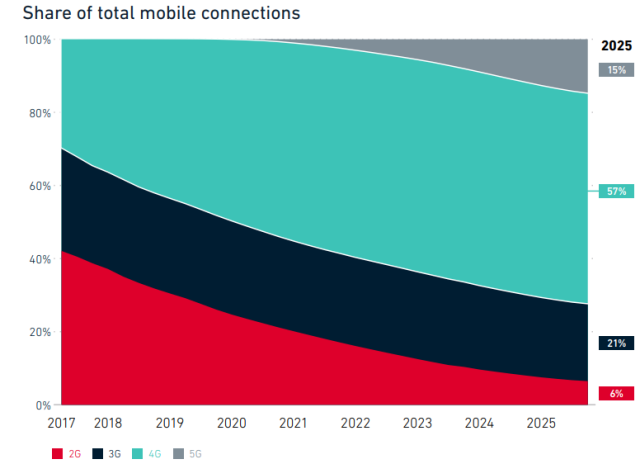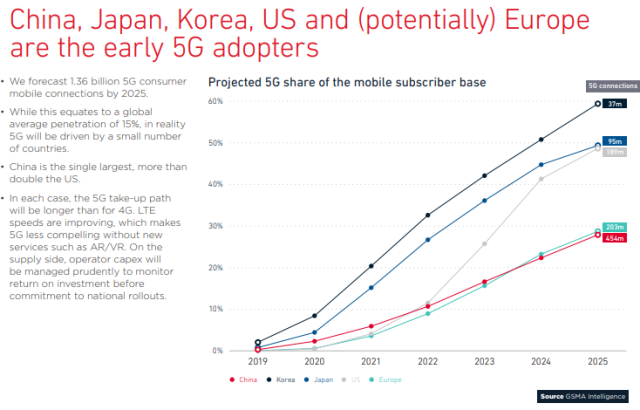Telecom industry association GSMA has outlined five spectrum related demands for the successful launch of 5G services by telecom operators.
 GSMA Intelligence forecasts that there will be 1.3 billion 5G connections by 2025. GSMA says the achievement in 5G connections will be dependent on operators gaining access to sufficient spectrum.
GSMA Intelligence forecasts that there will be 1.3 billion 5G connections by 2025. GSMA says the achievement in 5G connections will be dependent on operators gaining access to sufficient spectrum.
The progress in 5G business is slowing down considering the fact that 5G smartphones will be available in 2019. The main concern with 5G smartphones will be the huge price for the advanced devices.
The other concern about the demand for 5G use cases in developing nations including India, Indonesia, Malaysia, among others.
GSMA earlier warned that telecom operators cannot focus on 5G connectivity for residential customers as a strong focus area. The indication from GSMA is that mobile service providers need to get 5G revenue from enterprises.
Juniper Research says operator revenue from 5G will reach $300 billion or 38 percent of total operator billed revenues by 2025, despite the anticipated 1.5 billion 5G connections only accounting for 14 percent of all cellular connections in the same year.
“Operators urgently need more spectrum to deliver the endless array of services that 5G will enable – our 5G future depends heavily on the decisions governments are making in the next year as we head into WRC-19,” said Brett Tarnutzer, head of Spectrum, GSMA.
5G spectrum demands
#1
5G needs wider frequency bands to support higher speeds and larger amounts of traffic. Regulators that make available 80-100 MHz of spectrum per operator in prime 5G mid-bands (e.g. 3.5 GHz) and around 1 GHz per operator in vital millimeter wave bands (i.e. above 24 GHz), will best support the very fastest 5G services.
#2
5G needs spectrum within three key frequency ranges to support all use cases:
Sub-1GHz spectrum to extend 5G mobile broadband coverage across urban, suburban and rural areas and to help support Internet of Things (IoT) services
Spectrum from 1-6 GHz to offer a good mix of coverage and capacity for 5G services
Spectrum above 6 GHz for 5G services such as ultra-high-speed mobile broadband
#3
It is essential that governments support the 26 GHz, 40 GHz (37-43.5 GHz) and 66-71 GHz bands for mobile at WRC-19. A sufficient amount of harmonised 5G spectrum in these bands is critical to enabling the fastest 5G speeds, low-cost devices and international roaming and to minimising cross-border interference.
#4
Governments and regulators should avoid inflating 5G spectrum prices (e.g. setting high auction reserve prices) as they risk limiting network investment and driving up the cost of services.
#5
Regulators should avoid setting aside spectrum for verticals in key mobile spectrum bands; sharing approaches, such as leasing, are better options where vertical industries require access to spectrum.






